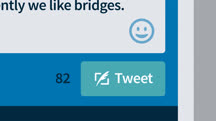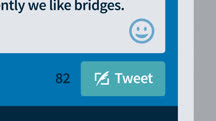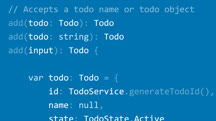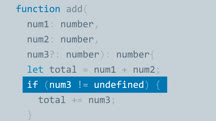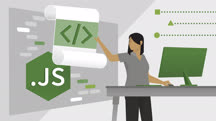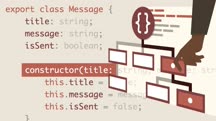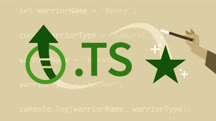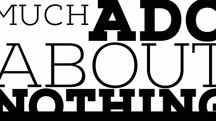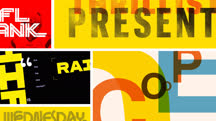Course catalog
Categories
Showing 8,141-8,160 of 8,871 items.
Twitter Essential Training
Learn how to compose and reshare tweets, connect with friends, and join the conversation on Twitter.
Twitter Essential Training (2019) (227899)
Learning how to speak the language of the "Twitterverse" can help you tap into a worldwide conversation and express your own ideas and opinions. In this course, learn the ins and outs of this massively popular social media platform. Staff instructor Jess Stratton begins by showing how to set up a Twitter account and begin following other users. Next, she walks you through composing your first tweet, including how to add photos, videos, links, and hashtags. Plus, Jess shows how to view current events and trending topics, navigate and use the Twitter app on a mobile device, and much more.
Type Tips Weekly
Take your love of letterforms to the next level. This weekly series explores all things related to type and the practice of typography.
TypeScript Essential Training
TypeScript makes JavaScript better! Learn everything you need to know to leverage the full power of the TypeScript language in your JavaScript applications.
Typescript for C# Programmers
Combine your C# skills with TypeScript to create powerful and scalable cross-platform web applications. Learn all the fundamentals, in this course specifically for C# developers.
TypeScript for Node.js Developers
Discover how to use TypeScript, a superset of JavaScript, with Node.js. Learn how to leverage this popular language's tools to support the development of large-scale applications.
TypeScript: Object-Oriented Programming (221609)
TypeScript boasts features that go beyond (and sometimes challenge) JavaScript approaches. But this superset of JavaScript really shines in the area of object-oriented programming (OOP). If you're familiar with JavaScript and want to incorporate OOP principles into your workflow using TypeScript, then this course is for you. Join instructor Dylan Israel as he details how and why TypeScript uses object-oriented programming models. Dylan covers a range of topics, including inheritance, polymorphism, generics, and encapsulation. Along the way, he shares challenges that allow you to put your understanding of these new concepts to the test.
TypeScript: Upgrades and Features
Take advantage of the latest features in TypeScript. Learn how to leverage external helpers, optional type checks, constant-named properties, and more.
Typography for Motion Designers in Cinema 4D (222629)
Typography is an important aspect of design. The MoText tool in Cinema 4D allows you to set good-looking type with an intuitive GUI and animate it using all the tools available in the MoGraph system. In this course, instructor Andy Needham covers kerning, tracking, use of fonts, and how to animate multi-line text. Andy begins by showing you the tools you can use to create type in Cinema 4D. He highlights MoText, because it works with the MoGraph system to enable you to animate your type easily. Andy steps through the process of setting type and adding details like bevels and materials. He concludes with all the steps and tools you need to animate your text.
Note: If you are using Cinema 4D S24 or later, please refer to the video regarding the MoText tool, as it has been renamed and moved in S24.
Note: If you are using Cinema 4D S24 or later, please refer to the video regarding the MoText tool, as it has been renamed and moved in S24.
Typography: Choosing and Combining Typefaces
Learn how to choose and combine typefaces for maximum visual impact.
Typography: Color Contrast and Scale
Learn to enhance the clarity and impact of your type—and your message—with effective use of color, contrast, and scale.
Typography: Hierarchy and Navigation
Create clear levels of importance and point readers in the right direction, whether it's for print-based or screen-based communication design.
Typography: Type in Motion
Explore best practices behind type in motion, and discover how to influence story and mood with typeface choices, movement, pacing, and special effects.
Typography: Working with Grids
Why do great designers use grids? Learn the principles of using grids to give your compositions strength and structure, break space into units, and streamline your design process.
UiPath Essential Training
Get up and running with UiPath, the popular robotic process automation (RPA) tool. Learn how to work with the software's key features and build robust, scalable processes.
UiPath: Robotic Process Automation (RPA)
Learn how to use UiPath, a leading robotic process automation (RPA) tool, to create software robots that automate repetitive tasks.
Ukulele Lessons: Fundamentals
Learn from Grammy-winning artist Daniel Ho as he helps you pick up ukulele at your own pace.
Ultralearning: Accelerate Your Career and Outsmart the Competition (Blinkist Summary)
Stop learning and start ultralearning. Learn how to accelerate your career, master hard tasks, and outsmart the competition.
Unconscious Bias
Learn how to understand and identify your own biases so that you can begin to make more thoughtful hiring, promotion, and interpersonal decisions in your everyday life.
Uncovering Unconscious Bias in Recruiting and Interviewing (232200)
Despite our best efforts, bias is a contributing factor in our decision-making. Unconscious bias is even more precarious, as we are often unaware that it's a factor in our decisions. In this course, Dr. Tana M. Session walks you through how to define a number of unconscious biases, as well as how the biases can impact your decision-making and how you can combat them when recruiting and hiring qualified candidates. First, Dr. Session explains what the term “unconscious bias” means and ensures no one feels guilty about discovering their own biases. Next, Dr. Session covers several common types of unconscious bias, including confirmation bias and affinity bias. For each type, she defines the bias and shows how it might impact your decision-making. After this, Dr. Session concludes by outlining strategies to minimize bias in the recruiting and interview process, such as learning how to find diverse candidates to fill positions, use diverse panel interviews, and utilize interview scorecards.
